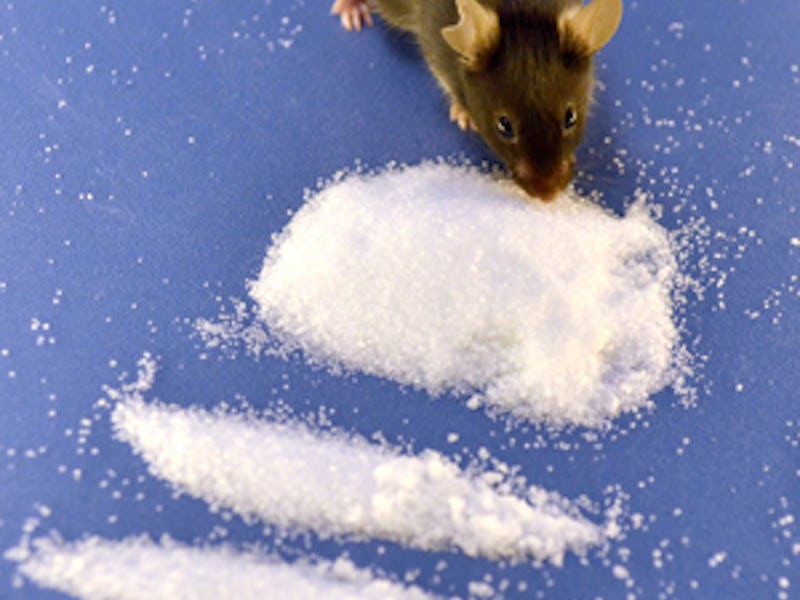Genetically Engineered Mice DGAF About Cocaine

Researchers have been creating drug-addicted laboratory mice for years, but now, they’ve created one capable of just saying no. Armed with extra-strong synapses created through genetic engineering, the new mice were able to resist addiction, even when presented with an OD’s worth of cocaine. The freak mice were discovered by accident: The genetic engineering strategy that produced them was originally thought to make them more prone to addiction.
The University of British Columbia (UBC) researchers, publishing their work in a new Nature Neuroscience article today, custom-designed mice that produced higher-than-usual levels of the protein cadherin, which strengthened their brains’ synapses, the gaps between neurons that brain signals jump over. They originally thought that strengthening the reward-associated parts of the brain with cadherin would make the mice more addiction prone, but when the cadherin-strengthened mice were injected with enough cocaine to become addicted and then given the option to seek out some more coke or not, they were only half as interested in the substance as their unaltered counterparts.
A close examination of this counterintuitive result revealed that cadherin inhibits a particular neurochemical receptor in the mice’s brains, making it harder — not easier — for some neurons to signal each other. With cadherin interfering with their brain’s signals, the mice don’t anticipate the pleasure derived from cocaine and, in turn, their behavior is not affected. In short, the mice seem to be addiction-proof.
The strength of our synapses is, among other factors, what helps us learn new tasks and make new associations, but the engineered mice appeared to have formed no strong associations about cocaine, despite being injected repeatedly. The experiment’s results reinforce previous theories that cadherin plays a vital role in addiction and behavioral change, though the exact nature of that role still isn’t clear.
Shernaz Bamji, Ph.D., a professor in the Department of Cellular and Physiological Sciences and one of the paper’s authors, explained to Inverse that these results mean it could some day be possible to treat addiction by changing the way learning occurs in certain areas of the brain itself, whether through cadherin, or using some other chemical. The more we learn about which functions within the brain we should be focusing on, she says, the closer we come to being able to predict who will be the most vulnerable to addiction. The results, however, do not mean doctors can start fortifying addiction-prone humans with cadherin the way Bamji and her colleagues did with the mice — there’s a lot we still have to understand about the neurochemistry of learning before we do that.
“For normal learning, we need to be able to both weaken and strengthen synapses,” Bamji said in a statement. “That plasticity allows for the pruning of some neural pathways and the formation of others, enabling the brain to adapt and to learn. Ideally, we would need to find a molecule that blocks formation of a memory of a drug-induced high, while not interfering with the ability to remember important things.”
The study adds to a growing body of evidence against the idea that addiction is all about an individual’s lack of willpower. Such arguments are usually lazy substitutions for the actual science, which says that addiction to substances like cocaine has a lot to do with our genes. Some people have genetic mutations that leave their synapses more vulnerable to addictive substances. Fortunately, geneticists are now one step closer to figuring out how to strengthen those synapses before they’re attacked.